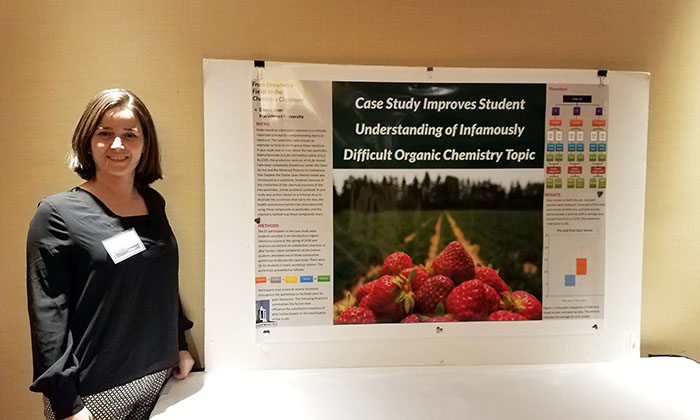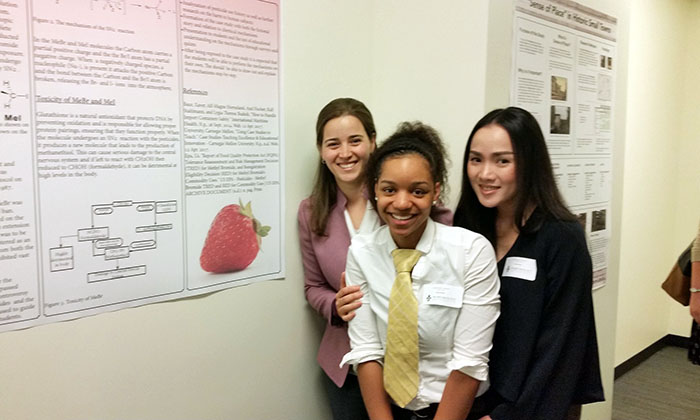As an Associate Professor of Chemistry at Marymount University, Dr. Deana Jaber has often encountered the challenge of teaching intricate concepts and complex theories of the science discipline.
“I’ve noticed myself struggling in the classroom to get the message across and to help my students understand complicated chemistry concepts,” she explained.
That led Dr. Jaber to think more seriously about how she and her fellow educators could deliver chemistry course material in a way that students could more easily grasp.
After six years of development, Dr. Jaber and her team — which includes two Marymount University graduates and former professor of Mathematics, Dr. William Heuett — have created a new learning tool published in the National Center for Case Study Teaching in Science. The organization, supported by the U.S. Department of Education and the National Science Foundation, aims to promote the development and dissemination of resources for case teaching in science.
“From Strawberry Fields to the Chemistry Classroom” is a case study that examines the differences in alkyl halides, a concept taught in introductory organic chemistry and Biochemistry. But what makes this case study a more effective tool in the classroom is the way in which the material is presented — through a narrative.
“You cannot underestimate the power of storytelling,” Dr. Jaber said. “It can be incredibly helpful in teaching and learning.”
The case study focuses on the use of two pesticides, methyl bromide and methyl iodide, used in California strawberry fields. Under the Clean Air Act and the Montreal Protocol on Substances that Deplete the Ozone Layer, methyl bromide should have been phased out of use by 2005, as noted in the case study. The U.S. received an exemption to push the phase out deadline to 2015. By 2010, methyl iodide was introduced as a substitute, but there have also been issues related to its use.

To better deliver the material, Dr. Jaber and Marymount graduates Simone Walker and Quyen Doan created a fictional story with two main characters — “Kelly,” a junior college student studying organic chemistry, and “Jessica,” an environmental scientist at the National Institutes of Health. The narrative illustrates the real world issue of both pesticides and why the alternative, methyl iodide, was no better solution due to the similarities in chemical structure.
Focusing on a storyline, Dr. Jaber reasons, allows for students to understand the context of the pesticide use, while also detailing the intricate breakdown of the compounds against an identifiable scenario.
“Students can relate to the idea of eating strawberries and, therefore, find a genuine interest in how the fruit is being treated with each pesticide,” Dr. Jaber explained. “From there, it is much more interesting to learn the reactions of alkyl halides and the factors that affect these reactions.”
The case study has been proven to increase students’ understanding. Dr. Heuett led analysis of a workshop in which students in an introductory organic chemistry course completed the case study and were given a quiz before and after reviewing the material.
According to the findings, students demonstrated a definite increase in their average quiz scores, and in a survey, they expressed a greater knowledge of understanding in the topic.
Dr. Jaber credits a significant amount of the case study’s success to the work of Walker and Quyen. As undergraduate students, they presented the case study at the Marymount Student Research Conference in 2017, and in the summer of that year, Walker and Quyen each received a research fellowship to continue their work.
“I am always impressed when our undergraduates rise to such a high level and make a contribution like this to the field,” said Dr. Todd Rimkus, founding Director of the School of Natural Sciences and Mathematics. “The students gain so many valuable skills from the faculty members and they offer many insights on ways to think about the work that the faculty members may not have thought of.”
In honor of their contributions, Dr. Jaber listed their names first on the list of the case study’s authors.





